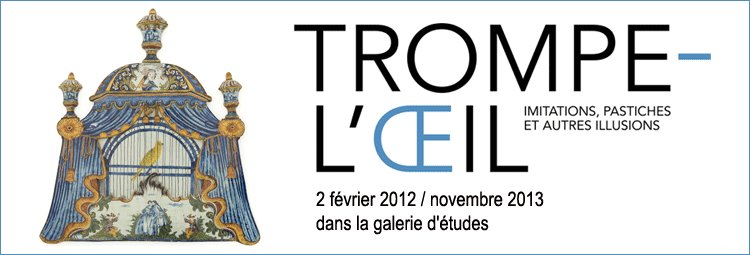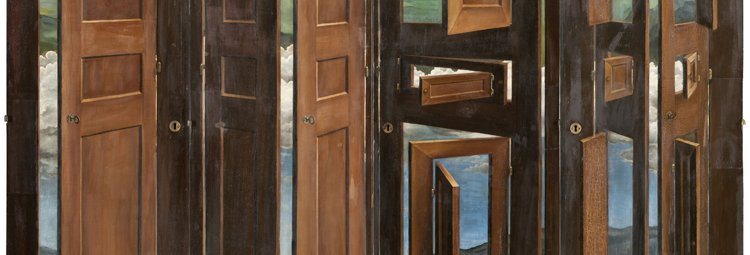Trompe l’oeil– or art designed to trick the eye

“Trompe-l’œil. Imitations, pastiches et autres illusions” (art designed to trick the eye) is the title of a new Paris exhibit (2 Feburary 2012–November 2013) exploring the history of illusion and pastiche, from ancient frescoes to fashion and the decorative arts.
“It’s a game between the creator and the viewer, it’s all about reality and perception,” said to AFP curator Veronique Belloir, summing up the subject of the show which runs for 18 months at the Paris Museum of Decorative Arts.
The core of the exhibit is the place of illusion in the decorative arts, which took off in the late 19th century.
In decorative art, this ‘trickery of the eye’ took very diverse forms. Wallpapers, for instance, proved ideal for this form of expression. From the most modest to the most sumptuous, they all imitate materials: wood, lacquer, tiles, straw, velvet, and even framed pictures. Many imitations were of course done for economic reasons, and in this game of
substitutes, one sees that for centuries many materials have been imitated by others: marbled ceramics imitating jasper, glazed ceramics imitating porphyry or gold, paste imitating the diamond, linoleum floorboards, and so on. This game of illusions evolved in the 19th century, when, historicism oblige, it was not only materials that were imitated but motifs too. Owen Jones’ famous The Grammar of Ornament, like its French equivalent, Albert Racinet’s l’Ornement polychrome, provided numerous medieval and Moorish motifs for 19th-century creators.
“Imitation is one of the great themes of the decorative arts,” said co-curator Dominique Fourest. “Cost is part of the reason, but not the whole story. This was also a way for creators to develop their virtuosity.”
Fashion has also made copious use of the trompe l’oeil genre, starting in the 1920s with Italian designer Elsa Schiaparelli, who created knitted sweaters patterned with make-believe scarves or accessories.
“Fashion is quite unashamed to talk about faux-collars, false lashes, wigs and faux-crocodile,” said Veronique Belloir.
Fashion was no exception and became the theatre of the most outrageous illusions. In the 18th and 19th centuries, wigs, tournures and faux-cul were worn to give false impressions. In the 20th century, illusion focussed less on form than on the fabric itself, with the appearance of false wears and tears, false pockets, false buttons, etc. Like a treasure hunt traversing centuries and materials, this exhibition invites us into the great game of illusion or the ‘vertigo of imitation’.
Les Arts Décoratifs – galerie d’études
107 rue de Rivoli
75001 Paris


